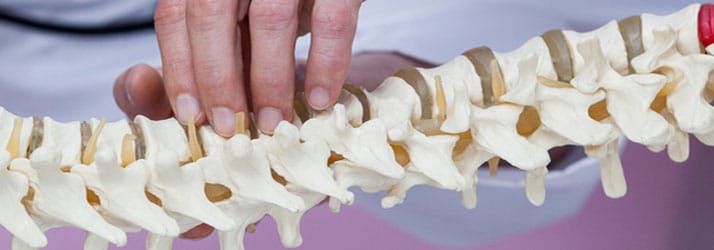How To Understand Back Problems
How To Understand Back Problems

The spine's anatomy and location of the back problem can sometimes create confusion for patients as well as health care professionals who handles back problems regularly. Patients suffering from back problems are often confused about where the exact location of the pinching is, and how it relates to their symptoms.
Many patients are having questions about their back problems especially when they aren't too familiar with what's happening. Even health specialists spend so much time in explaining the problem, the information that was given by them is still a bit difficult to understand.
This happens not only in back-related problems but also in other health inquiries, and it's no one's fault. To simply explain it, back problems are hard to describe and can be hard to understand. This article will help explain the details about how spinal anatomy is mostly described and the typical sources of confusion. It will also discuss some of the terminologies used in spinal anatomy that relates to common diagnosis and the sources of back problems.
Back problems don't always involve the spinal cord
The first thing you need to know is that your spinal cord doesn't usually cause back problems. Conditions like disease or trauma in the cervical or thoracic spine can cause damage to the spinal cord, and they're so different from most of the back problems that causes pain.
The spinal cord starts at the base of the brain and runs down through the thoracic and cervical spinal canal and stops just before the lumbar segment begins. This simply shows that the spinal cord isn't directly connected to the lower back. While some cervical spine problems can affect the spinal cord and cause symptoms like difficulty in coordination, it is more common for back problems to affect the nerve roots instead of the spinal cord.
Nerve roots are exiting through the holes in the spine's bone at every level. Back problems can easily affect the nerves as they exit the spine while causing pain and other symptoms that will spread throughout the extremities (called a radiculopathy). In the low back, the way how the nerve roots exit and branch off from the lumbar spine and sacral region looks similar to a horse's tail. They exit on each side between the bones in the spine, and goes down through the low back, across each buttock, then down into the lower extremities.
The way how back problems are described can sometimes create some confusion.
common issues that most people are having difficulties in understanding
- Nerve Root Impingement - There's a lot of confusion when a herniated disc or other back problem pinches a nerve root and the problem is described both by the affected nerve root and intervertebral level. Depending on where the disc herniation has happened, it may impinge upon either the exiting or traversing nerve root.
- Spinal Abnormalities - 1 out of 10 adults have an existing structural low back abnormality from the moment they were born. The most typical form of abnormality is having an extra lumbar vertebra. A 6th lumbar vertebra can trigger back problems, but it can also cause some confusion on how the spinal anatomy is described.
Hopefully, this article has shed some light regarding your understanding on lower back problems and how they're sometimes not related to your spinal cord. For some more in-depth details, please get in touch with Dr. Alex Tam of Vacaville. He has some more information on this topic so you can go visit him in the top chiropractic and holistic clinic in the Solano county.
Monday
9:00am - 12:00pm
2:00pm - 6:00pm
Tuesday
9:00am - 12:00pm
2:00pm - 6:00pm
Wednesday
9:00am - 12:00pm
2:00pm - 6:00pm
Thursday
9:00am - 12:00pm
2:00pm - 6:00pm
Friday
9:00am - 12:00pm
2:00pm - 6:00pm
Saturday
Closed
Absolute Family Chiropractic
1490 Alamo Drive Suite B
Vacaville, CA 95687
(707) 474-5688




